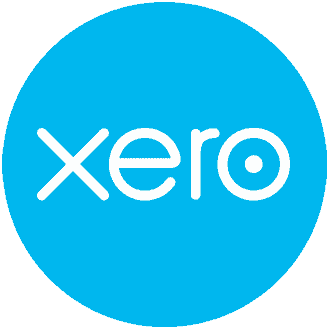Post Election Update
The Election is over, and the Labour Party has taken a historical win. Now, with another term of Labour Government, are we up for further tax changes?
As with most elections, there were a range of tax policies on the table in the lead up to New Zealand’s Election on Saturday. With the Labour Party taking the majority of seats they are capable of governing alone. So what do we expect in terms of tax changes?
Wealth and capital gains taxes – Election promises put to bed?
One of the biggest concerns leading up to the Election was the Green Party’s Wealth Tax. The Green Party heralded its Wealth Tax as its bottom line in any negotiations to form a Government, which made it a very real possibility. The proposed Wealth Tax would tax net wealth at 1% over $1m and 2% over $2m.
With the Labour Party having won enough of the votes to govern alone, it does not need the support of a minor party, i.e. the Green Party. However, Labour has not yet confirmed it will govern alone and has entered into discussions with the Green Party. That said, Jacinda Ardern has confirmed, categorically, that she will not impose a capital gains tax, or a wealth tax. With the Green Party lacking the leverage to get their new tax across the line, hopefully, this is the end of the proposed Wealth Tax in New Zealand. Until the next election at least.
Income tax
The Labour Government will introduce a new, higher, income tax bracket of 39% for individuals on income over $180,000. The Labour Government’s approach to the post-Covid economy has been to subsidise and spend, with borrowed money. The higher tax rate is a proposal to repay that debt.
However, where company and trust tax rates remain at 33%, the reality is that this new higher tax bracket is likely to impact salary and wage earners the most, and is highly unlikely to return any real revenue to the Government.
We will be working with our clients to manage these changes.
Property
From a property perspective, the Labour Government has already introduced tax changes for residential property investors.
The theory behind these tax changes was to “disincentivize” investment in residential rental property, in order to address New Zealand’s housing crisis and encourage personal home-ownership. Although the percentage of first home buyers has increased, the housing crisis has also increased dramatically making it extremely difficult to secure rental houses in New Zealand. Unfortunately, disincentivizing investment in good quality rental homes with punitive tax rules appears to be counterproductive.

Not surprisingly, with the Labour Party back in Government, we are not expecting any changes in this area:
The current five-year Bright Line Test will remain. In English, the Bright Line Test means that if you buy and sell a residential property within five years, you will be taxed on the gain. A pseudo capital gains tax. There is an exemption for your family home.
Labour’s ring-fencing rules for Residential Property Tax Losses will also remain. These Rules mean that an owner of a residential rental property that incurs a loss cannot offset that loss against other income. So if I own a rental property and I have to top it up each year, I have probably made a tax loss. Where I am paying tax on my salary, or business income, I cannot offset the tax loss against my income to reduce my overall tax bill. Instead, I still pay full tax on my salary or business income, and my tax loss from my rental property sits off to the side. These ring-fencing rules do not apply to any other business in New Zealand.
Should you need help with the new tax rules, please get in touch with Angela.
E: angela.hodges@nztaxdesk.co.nz
P: 021 023 08149
New Zealand in demand by migrant investors
NZ Tax Desk is a preferred supplier of New Zealand tax advice for new residents and works closely with Pathways to New Zealand Limited, one of New Zealand’s leading immigration advisory firms. With the world in turmoil, Richard Howard has provided an update below on immigration in New Zealand and his thoughts on any post Election changes.
The level of interest in the New Zealand investor residence categories since the COVID crisis descended on the world as surpassed anything seen before – and this interest is continuing. While there have been times in the past which have seen high levels of investor inquiry these have not followed through into actual applications and investment. But it is a different world now!
Over the past four months, we have contracted more investor residence visa casework than we have had in the previous four years. There are two investor categories one of which requires an investment of NZ$10 million over 3 years, and the other requires an investment of NZ$3 million over 4 years. Each category has different eligibility criteria and while there is a range of qualifying investments these investments remain under the full ownership and control of the applicant throughout the investment term. Expectations are that between NZ$2 – $3 billion of investment is possible from investor resident visa applicants to aid New Zealand’s economic recovery in the next year alone.
While most of the interest we are seeing is from the USA we also have significant interest from Hong Kong, Singapore, the Philippines, Indonesia, South Africa, and Europe. It is very apparent this interest is being driven by COVID and New Zealand’s successful management of this epidemic by comparison with other countries – and by the forthcoming USA election.
There is no doubt New Zealand is now a very attractive country to live, study, work, and invest in and the new Labour Government will be taking time to consider an “across the board” reset of all its immigration settings and while border restrictions remain in place. The likelihood is that this reset will see a focus on smaller numbers of migrants, students, workers, and investors and on those who are best matched to, and most desired for, New Zealand’s requirements in this new and changing world. New Zealand’s ranking as a preferred migrant destination is on the rise!
Richard is the Managing Director of Pathways to New Zealand Ltd, one of New Zealand’s longest established and foremost immigration advisory companies.
Traveling New Zealand during Covid

As many of you know, we spent most of our winter traveling the South Island of New Zealand with the family, in a caravan! I have enjoyed the flexibility to start a new business, whilst developing meaningful relationships with clients throughout the world, and exploring New Zealand, spending quality time with my family.
We had originally intended to travel Europe for nine months, and still own a campervan sitting in the Netherlands. Although Covid clearly meant a change of plans, New Zealand in winter has been stunning. In the absence of a global pandemic, I probably would never have signed up to travel the South Island during winter, which meant I would never have seen the stunning skies, woken up to fresh snow, or experienced the crisp mountain air.
Every cloud has a silver lining, and New Zealand in winter was our covid cloud’s silver lining.

| Traveling New Zealand during a pandemic has been eerily quiet. The facilities are in place. The huge bus carparks are empty. Large, luxury hotels have been put into hibernation. Travel and activity businesses are closed or have reduced hours, and the boats at the Milford Sounds are closed up with the lights off. We are now back home, and the children back in school. We will continue to travel and explore New Zealand during term breaks. And, hopefully, one day soon the borders will re-open and we can once again welcome international visitors. |

Contact Angela at NZ Tax Desk Ltd:
E: Angela.Hodges@nztaxdesk.co.nz
P: +64 (0)21 023 08149
*This publication contains generic information and opinion. New Zealand Tax Desk is not responsible for any loss sustained by anyone relying on the contents of this publication. We recommend you obtain specific taxation advice for your circumstances.
October 2021
The post Post Election Update appeared first on .













